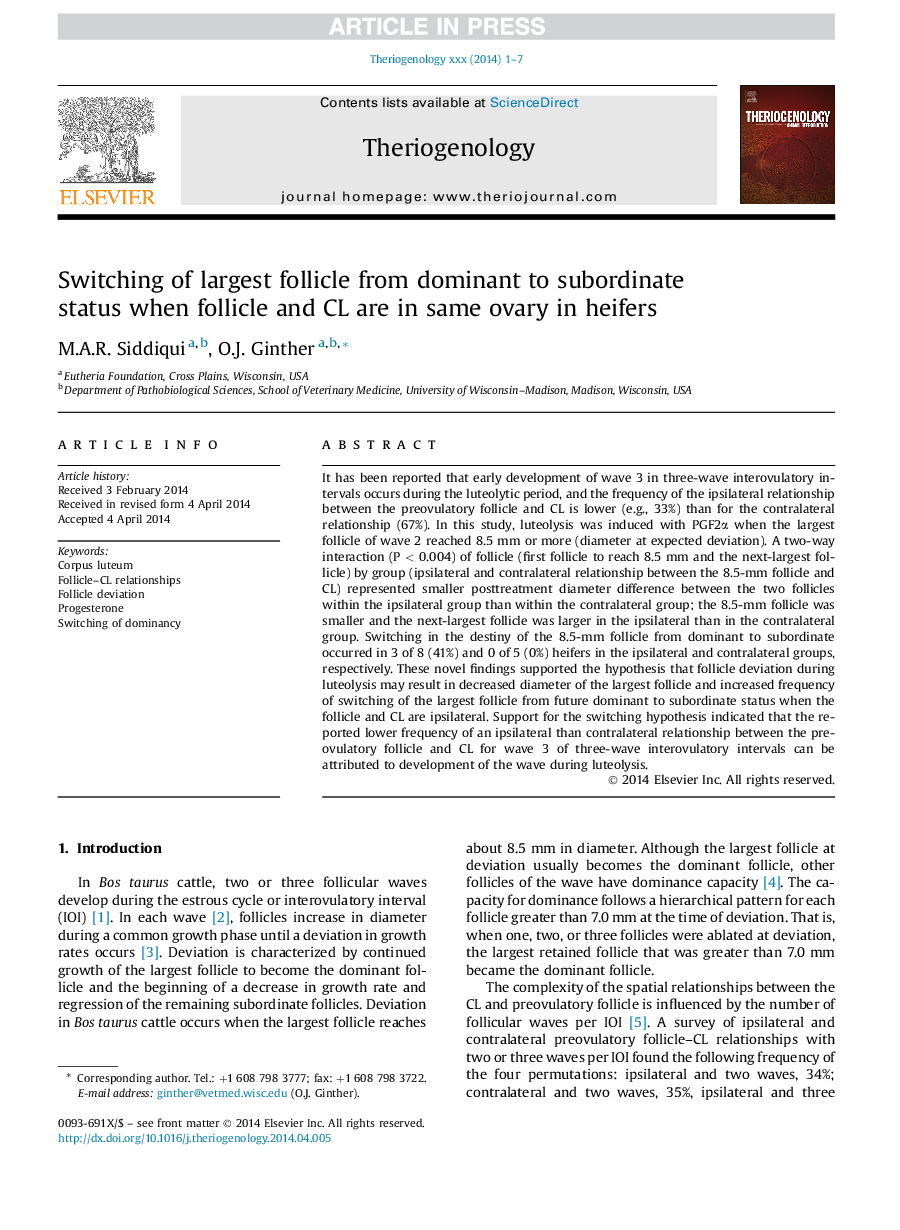| کد مقاله | کد نشریه | سال انتشار | مقاله انگلیسی | نسخه تمام متن |
|---|---|---|---|---|
| 10891951 | 1082081 | 2014 | 7 صفحه PDF | دانلود رایگان |
عنوان انگلیسی مقاله ISI
Switching of largest follicle from dominant to subordinate status when follicle and CL are in same ovary in heifers
دانلود مقاله + سفارش ترجمه
دانلود مقاله ISI انگلیسی
رایگان برای ایرانیان
موضوعات مرتبط
علوم زیستی و بیوفناوری
علوم کشاورزی و بیولوژیک
علوم دامی و جانورشناسی
پیش نمایش صفحه اول مقاله

چکیده انگلیسی
It has been reported that early development of wave 3 in three-wave interovulatory intervals occurs during the luteolytic period, and the frequency of the ipsilateral relationship between the preovulatory follicle and CL is lower (e.g., 33%) than for the contralateral relationship (67%). In this study, luteolysis was induced with PGF2α when the largest follicle of wave 2 reached 8.5 mm or more (diameter at expected deviation). A two-way interaction (P < 0.004) of follicle (first follicle to reach 8.5 mm and the next-largest follicle) by group (ipsilateral and contralateral relationship between the 8.5-mm follicle and CL) represented smaller posttreatment diameter difference between the two follicles within the ipsilateral group than within the contralateral group; the 8.5-mm follicle was smaller and the next-largest follicle was larger in the ipsilateral than in the contralateral group. Switching in the destiny of the 8.5-mm follicle from dominant to subordinate occurred in 3 of 8 (41%) and 0 of 5 (0%) heifers in the ipsilateral and contralateral groups, respectively. These novel findings supported the hypothesis that follicle deviation during luteolysis may result in decreased diameter of the largest follicle and increased frequency of switching of the largest follicle from future dominant to subordinate status when the follicle and CL are ipsilateral. Support for the switching hypothesis indicated that the reported lower frequency of an ipsilateral than contralateral relationship between the preovulatory follicle and CL for wave 3 of three-wave interovulatory intervals can be attributed to development of the wave during luteolysis.
ناشر
Database: Elsevier - ScienceDirect (ساینس دایرکت)
Journal: Theriogenology - Volume 82, Issue 2, 15 July 2014, Pages 259-265
Journal: Theriogenology - Volume 82, Issue 2, 15 July 2014, Pages 259-265
نویسندگان
M.A.R. Siddiqui, O.J. Ginther,